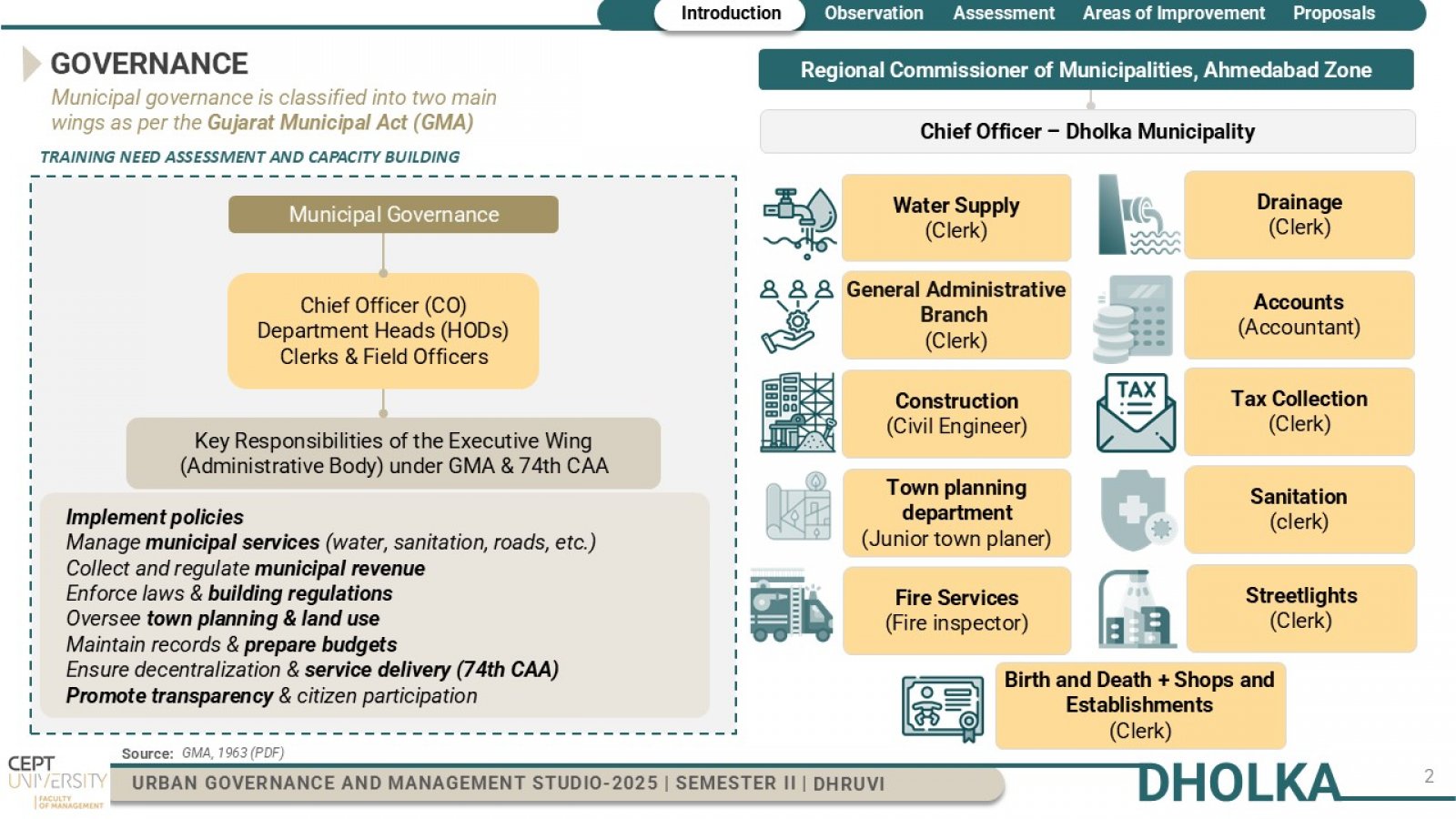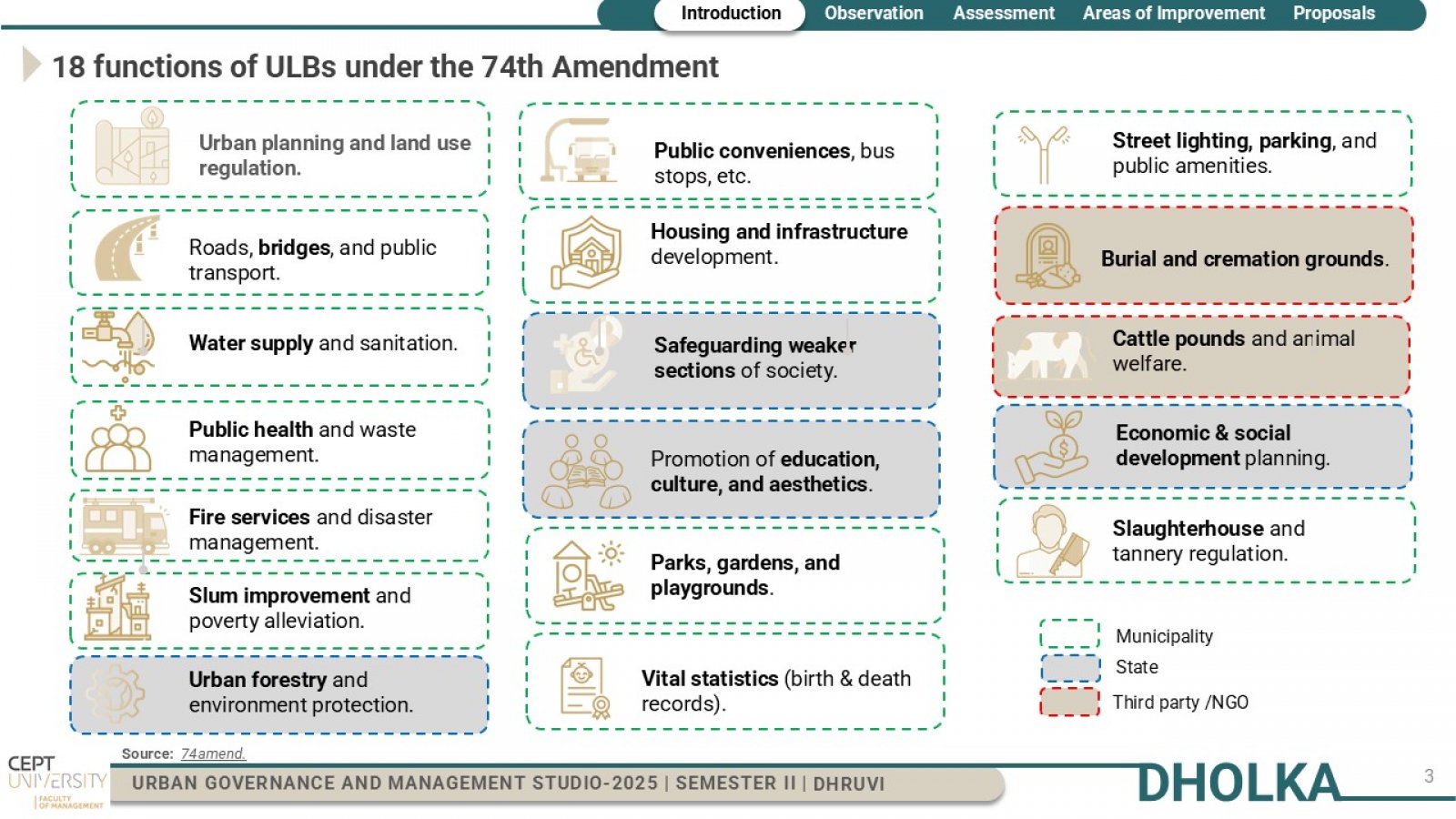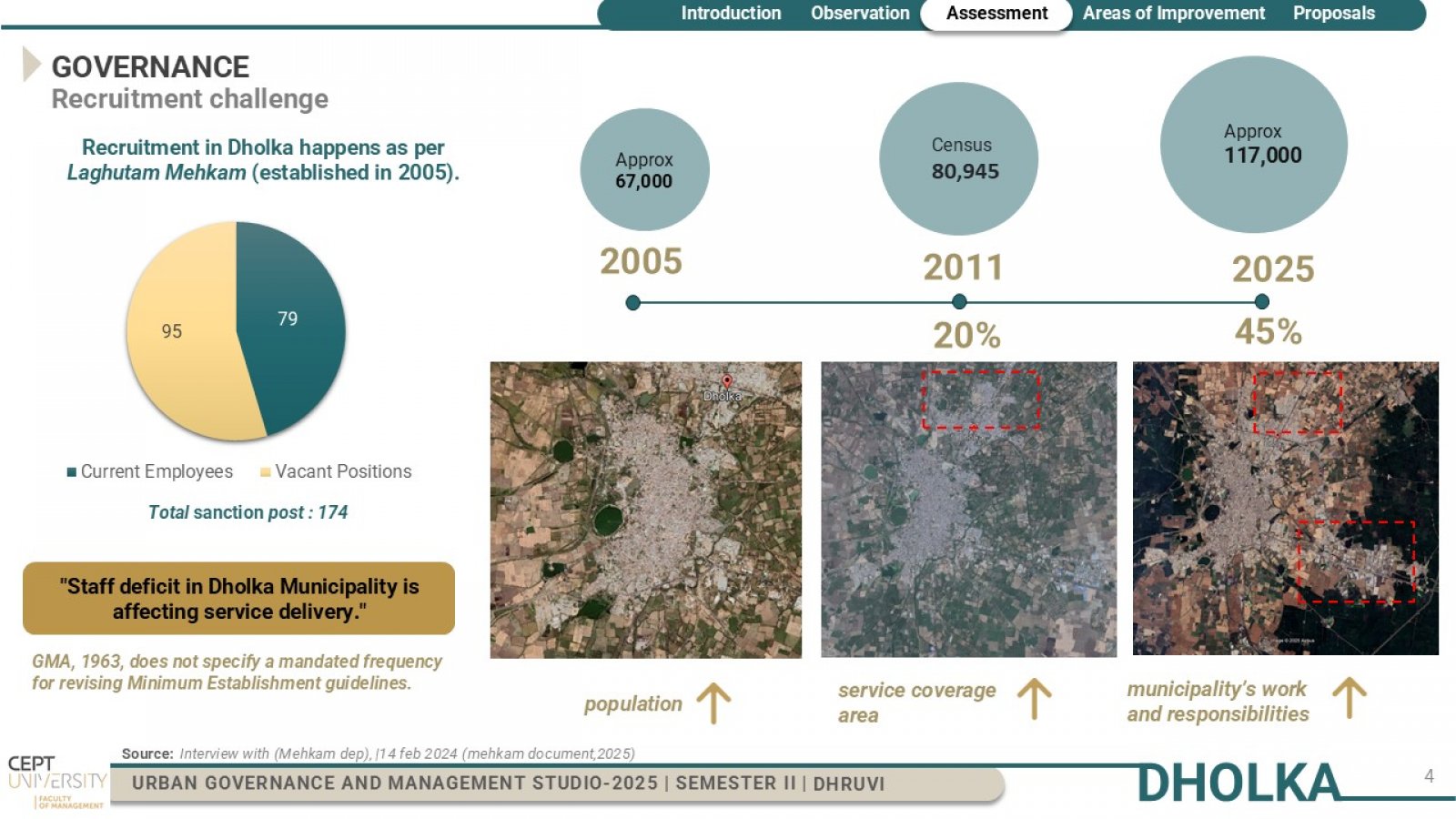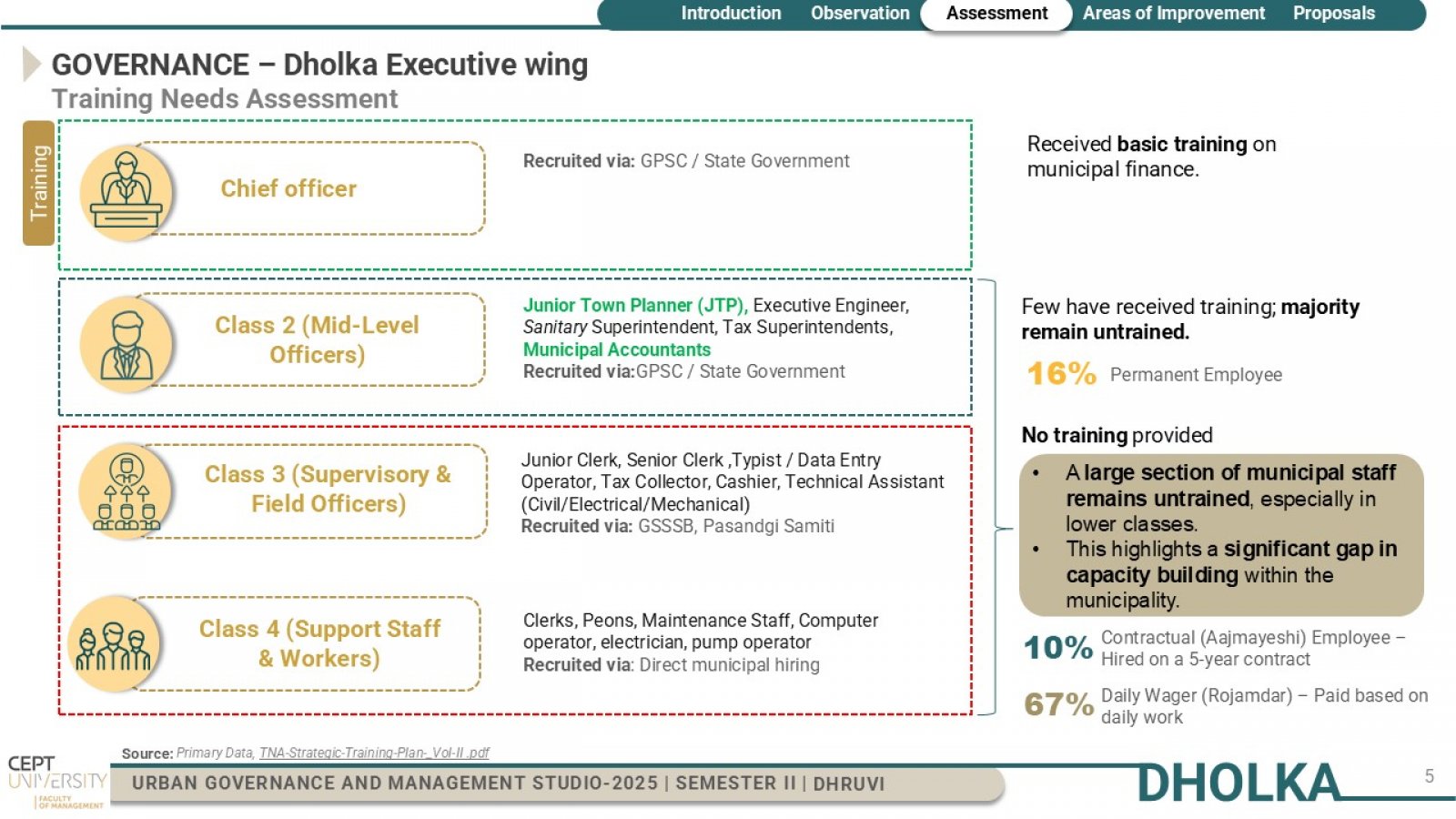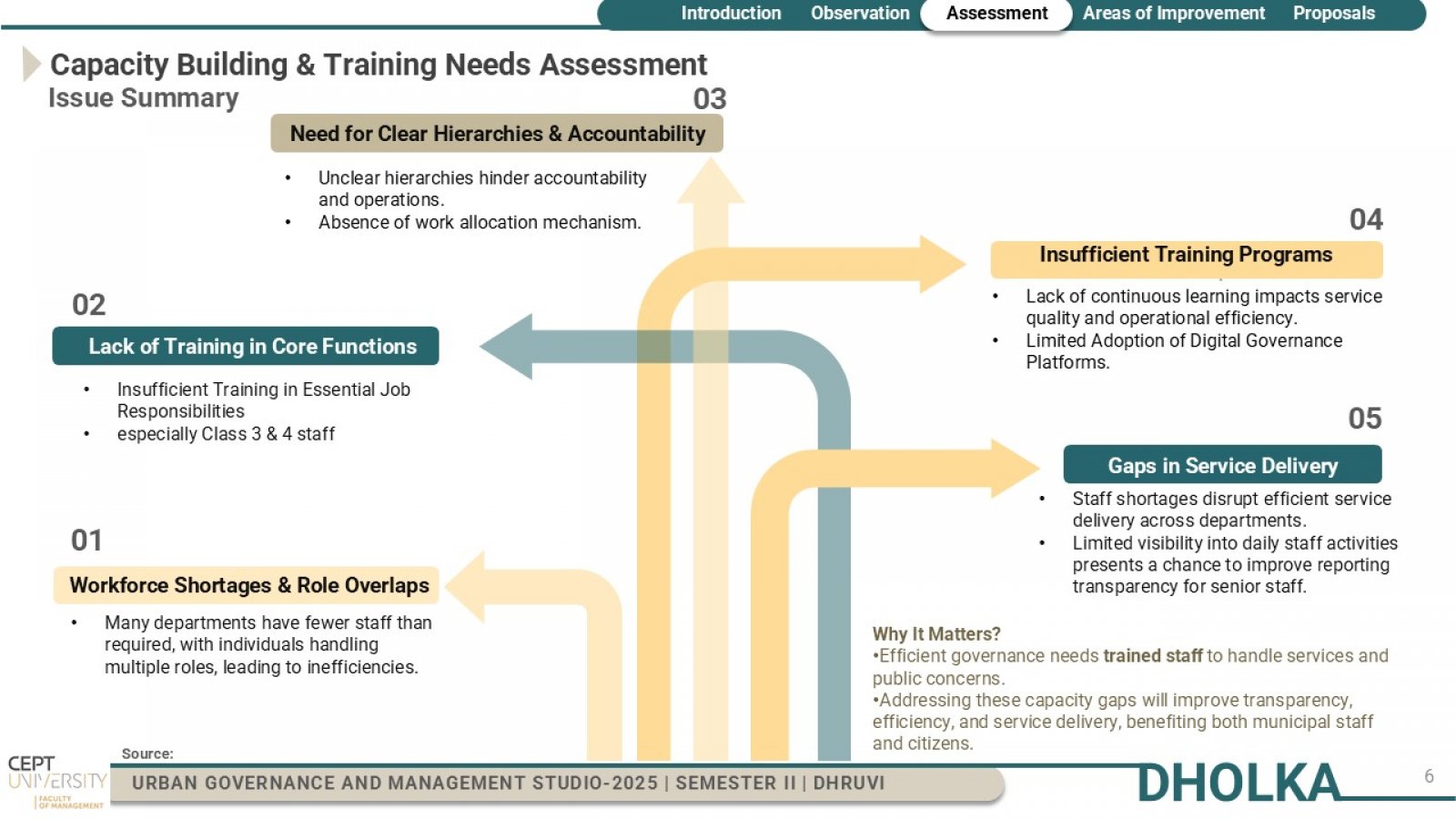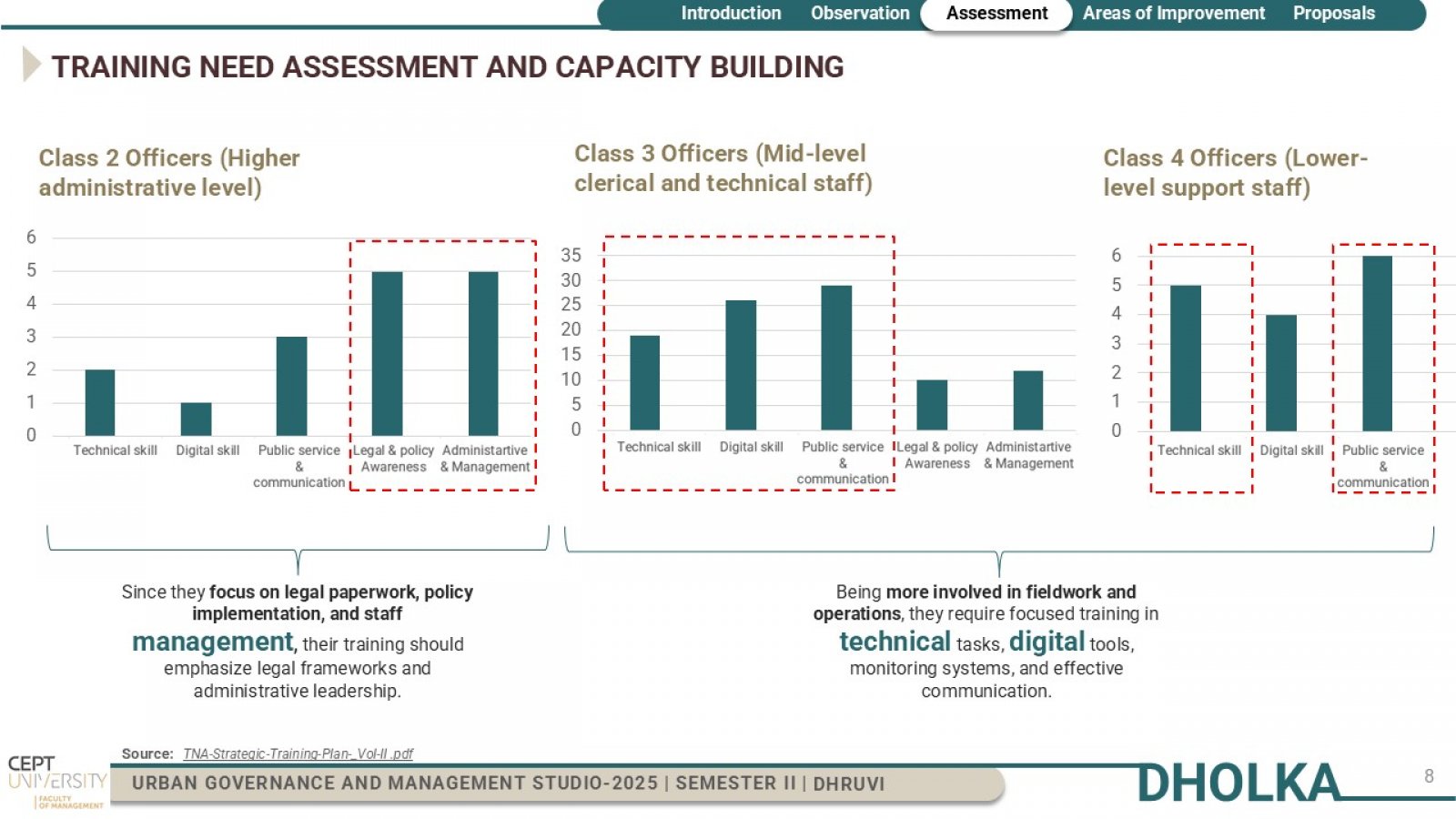Your browser is out-of-date!
For a richer surfing experience on our website, please update your browser. Update my browser now!
For a richer surfing experience on our website, please update your browser. Update my browser now!
This project focuses on assessing the municipal administration of Dholka Municipality, with a specific emphasis on the existing staff capacity and recruitment process. The study includes an analysis of the current staffing ratio and identifies gaps in staff sufficiency and departmental distribution. A Training Need Assessment (TNA) was conducted to evaluate the skill levels and capacity-building requirements of the municipal workforce. Based on the findings, the project highlights critical issues related to understaffing, lack of structured recruitment, and limited training opportunities. To address these challenges, a proposal was developed that includes actionable recommendations aimed at strengthening the municipality’s administrative capacity. These include structured recruitment processes, periodic training programs, and capacity-building modules tailored to the needs of different staff categories. This project provides a strategic roadmap to enhance the efficiency and effectiveness of municipal governance in Dholka.

